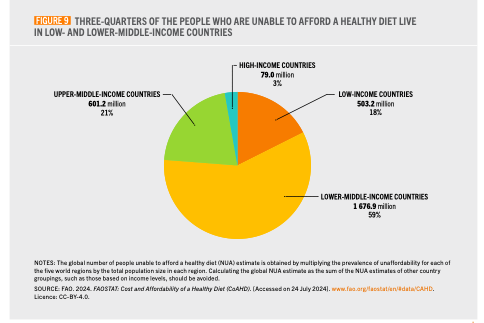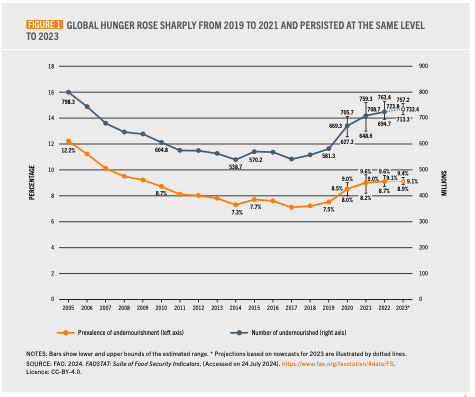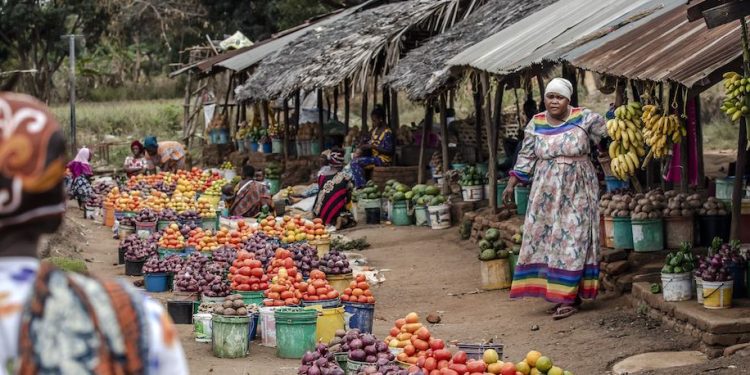Two thirds of Africa’s population is unable to afford a healthy diet, against a global average of a third, the Food and Agriculture Organisation (FAO) says in a recent report.
- At 64.8 percent, Africa has the highest proportion of people who can’t afford a healthy diet, followed by Asia (35.1%), Latin America and the Caribbean (27.7%) and Oceania (20.1%).
- In low-income and lower-middle-income countries, the number of people unable to afford healthy diets grew from 2019 to 2022.
- While food prices increased throughout 2022, pushing up the average cost of a healthy diet, this was largely offset by economic recovery and the ensuing positive income effects
“In 2022, the number of people unable to afford a healthy diet dropped below pre-pandemic levels in the group of upper-middle- and high-income countries. In contrast, low-income countries had the highest levels since 2017, the first year for which FAO has published estimates,” said Maximo Torero, Chief Economist of FAO.

Prices, in purchasing power parity (PPP) rose significantly-a global average of 6 percent in 2020 and 11 percent in 2021.
The global average cost of a healthy diet rose to 3.96 PPP dollars – a measure that compares purchasing power parity across economies – in 2022.
Subregional variations were considerable, ranging from a high of 5.34 PPP dollars in Eastern Asia to a low of 2.96 PPP dollars in Northern America. For Africa, the average price was 3.74 PPP dollars; for Asia 4.20 PPP dollars; for Latin America and the Caribbean 4.56 PPP dollars; for Oceania 3.46 PPP dollars and for Northern America and Europe 3.75 PPP dollars, with a sizable difference between Southern Europe, at 4.15 PPP dollars and Western Europe at 3.01 PPP dollars.
1.677 billion people living in lower-middle-income countries cannot afford a heathy diet, and the same holds for 503 million people living in low-income countries. Combined, these account for 77 percent of people unable to afford healthy diets.
According to the FAO, the foray into gauging and tracking affordable healthy diets in addition to its traditional metrics of hunger is as “an early warning of sorts. “People who cannot afford the least-cost healthy diet in their countries are likely facing at least some degree of food and nutritional insecurity and thus face the risk of swelling the ranks of the hungry,” the organisation said in a statement.

“Africa remains the region with the largest estimated proportion of the population facing hunger – 20.4 percent, compared with 8.1 percent in Asia, 6.2 percent in Latin America and the Caribbean, and 7.3 percent in Oceania,” FAO said in the The State of Food Security and Nutrition in the World report.




